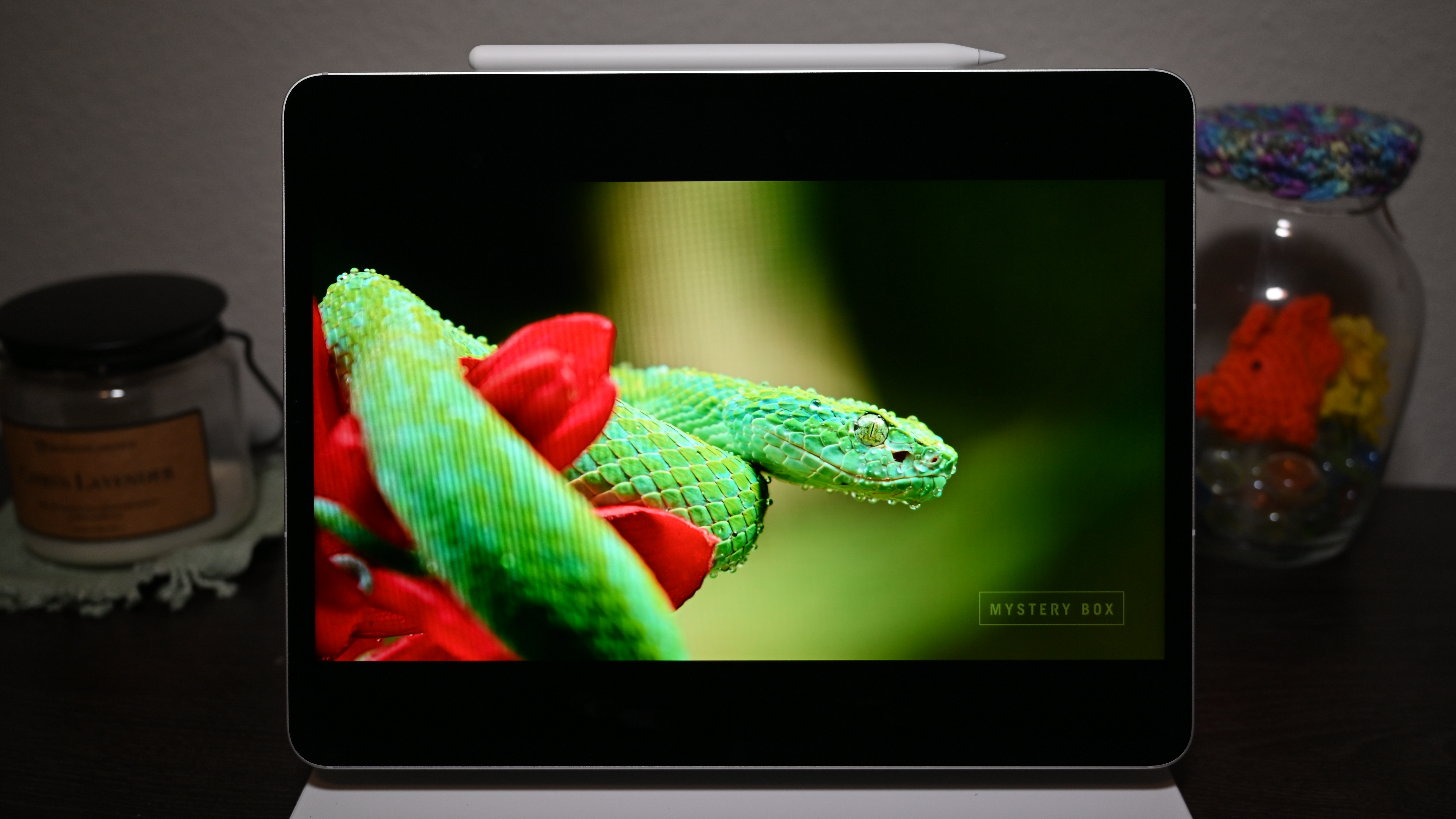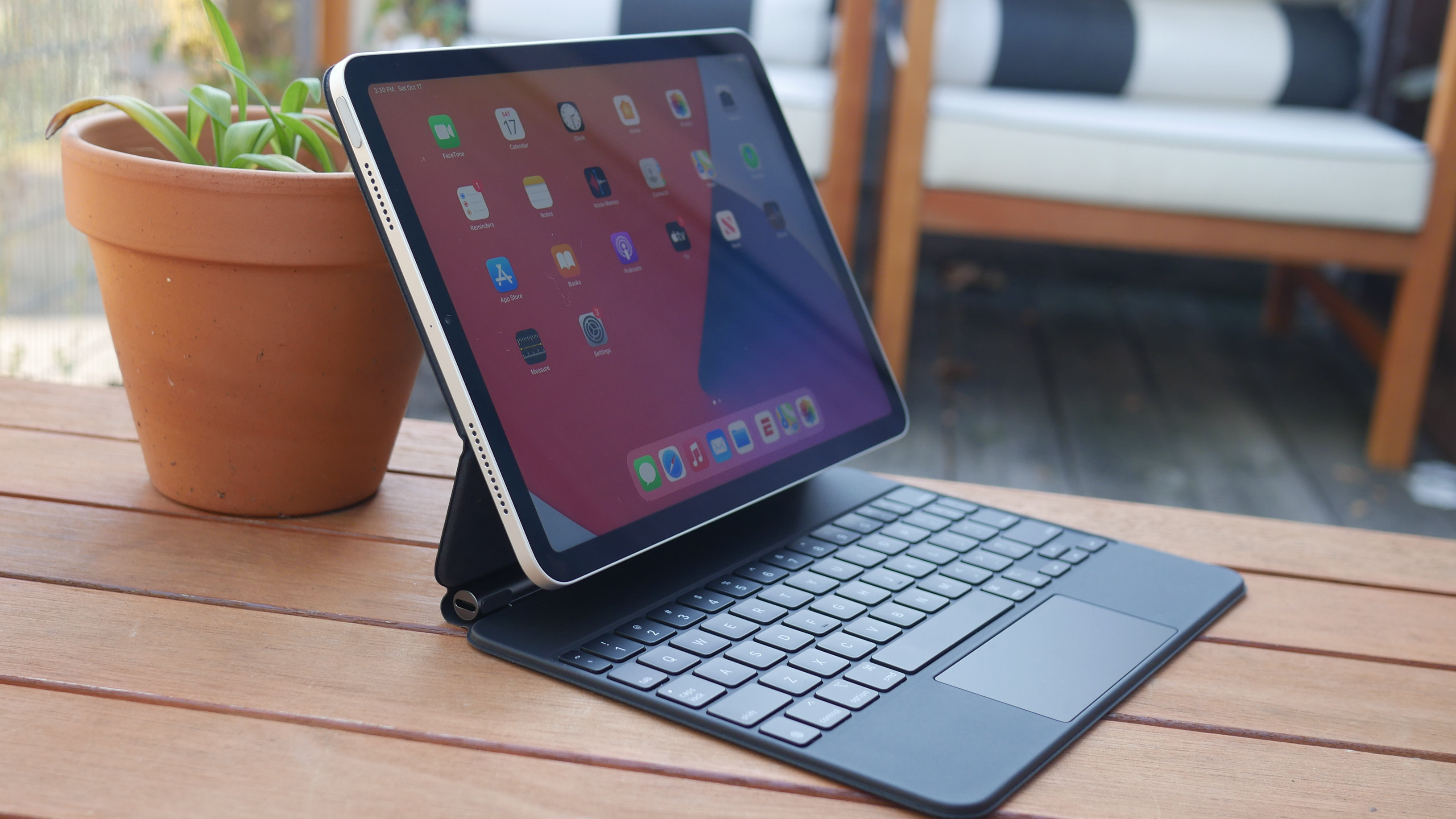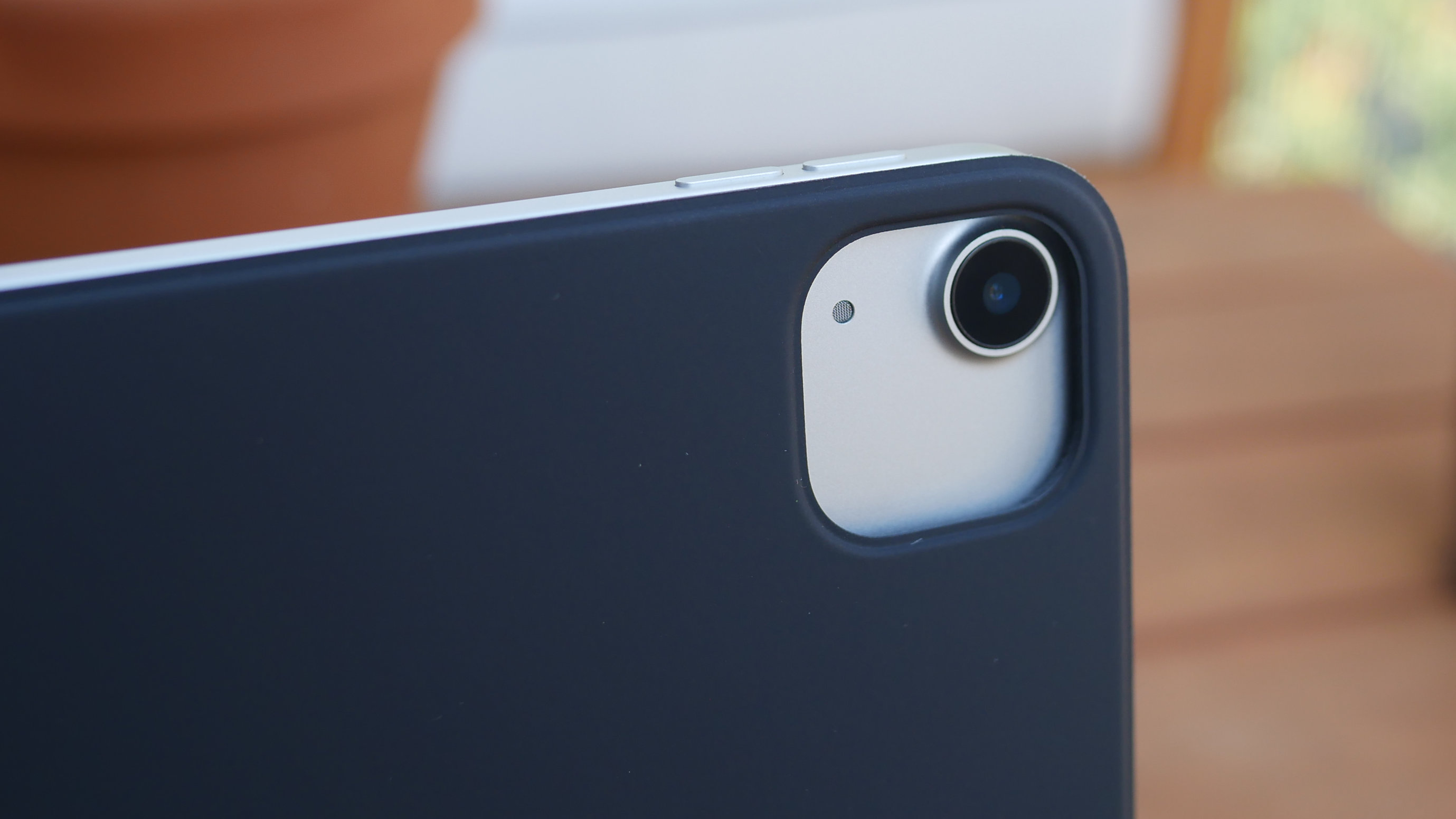iPad Air (2020) vs. iPad Pro (2021): Which tablet should you buy?
We pitted the iPad Air against the iPad Pro to see which latest Apple tablet is right for you.

Apple's new iPad Pro is the most powerful and feature-filled tablet on the market, bar none. If you want the pinnacle of tablets, the iPad Pro is the best choice thanks to its speedy performance, gorgeous mini-LED display and 5G wireless support.
So that's that, right? Get the iPad Pro and don't think twice about it — if only it were that easy. The iPad Pro may be the best tablet for crafting and consuming content, but Apple's most advanced features don't come cheap. The sticker shock alone is enough to make prospective buyers flee into the arms of a Surface Pro tablet or Chromebook. Don't worry, though; you don't need to abandon Apple's ecosystem just yet.
For other face-offs, check out our HP Envy x360 vs. Spectre x360, MacBook Air vs. Surface Laptop 4, Acer Nitro 5 vs. Asus TUF Dash F15 and Lenovo ThinkPad X1 Carbon vs MacBook Pro.
- Best Prime Day iPad deals available now
- Best laptops in 2021
- Best college laptops in 2021
This is where the iPad Air comes in. Sold at a more attainable price, the iPad Air shares many useful features with the iPad Pro while leaving some of the more niche enhancements to the pricier model. At least, it has in the past. This year, the iPad Pro received a few significant upgrades that distance it from the iPad Air.
Do the iPad Pro's new M1 processor, mini-LED display and 5G support make it worth the extra cash over the iPad Air? Let's take a close look at each tablet to find out.
iPad Pro vs. iPad Air price and configurations
The iPad Air starts at $599 with 64GB of storage. Upgrading to 256GB of storage raises the price to $749. An extra $130 on top of the Wi-Fi-only price gets you LTE support for mobile connectivity.
Apple doesn't sell a 128GB model, so you're stuck with limited storage (64GB) or forced to spend $749 on the 256GB model, which is only $50 less than the 128GB iPad Pro (11-inch).
Sign up to receive The Snapshot, a free special dispatch from Laptop Mag, in your inbox.
Yes, the 11-inch iPad Pro goes for $799 with 128GB of storage. That's a cool $300 less than its larger 12.9-inch sibling. Opting for 256GB of storage raises the price by $100 while the 512GB model costs $1,099. The price increases drastically from there with the 1TB model at $1,499 and 2TB for $1,899.
The iPad Pro 2021 (12.9-inch) starts at $1,099 for the 128GB Wi-Fi model with 8GB of RAM, making it $100 more expensive than the previous model. Doubling storage to 256GB brings the price to $1,199. From there, you can buy a 512GB model for $1,399, or pay $1,799 for 1TB and 16GB of RAM. If you can't store in the cloud or work with gigantic files, the 2TB model with 16GB of RAM costs $2,199.
iPad Pro vs. iPad Air design
The iPad Pro and iPad Air are slim metal slabs with thin display bezels and simple, understated designs. Not much separates these two when it comes to appearance. Both have sharply rounded corners, a centered chrome Apple logo and a comfortable flat-edge design.

Apart from their size, the major aesthetic difference between the iPad Pro and iPad Air is their respective camera modules. The Pro's triple-lens setup is housed in a squircle camera housing while the Air has a single, circular lens.
I doubt many people care about the camera modules; what they might desire is a range of colors to choose from. This is where the iPad Air gets one of its few outright victories against the iPad Pro. Where the Pro is available in bland silver and boring Space Gray, the iPad Air comes in rose gold, green, sky blue and the aforementioned traditional shades.

Biometric security methods are the other differentiator between these tablets. The iPad Pro uses Face ID via the front-facing camera whereas the iPad Air relies on a Touch ID fingerprint scanner embedded inside an oblong power button, which is located on the top edge. They both work reliably, but facial recognition is more effortless.

Both laptops come with USB-C ports though only the iPad Pro supports Thunderbolt 3 and USB4. They also share a similar magnetic holder on the top edge for charging and securing the Apple Pencil accessory. Both tablets produce excellent audio, but the iPad Pro benefits from four speakers versus two on the iPad Air.
At 9.74 x 7.02 x 0.23 inches and 1 pound, the 11-inch iPad Pro is about the same size as the 10.9-inch iPad Air (9.7 x 7 x 0.24 inches, 1 pound). The 12.9-inch iPad Pro is predictably larger and heavier at 11.04 x 8.46 x 0.25 inches and 1.5 pounds.
iPad Pro vs. iPad Air: display
Now it gets interesting.
New this year to the 12.9-inch iPad Pro is a Liquid Retina XDR display using mini-LED technology. Instead of a uniformly backlit LED screen, the iPad Pro uses 2,500 local dimming zones that can illuminate during bright scenes or turn off completely during dark ones. The result is deeper blacks, more vivid colors and a 1,000,000:1 contrast ratio.

In theory, the mini-LED panel sounds like an OLED killer. In practice, it isn't too different from the previous panel nor the standard 10.9-inch Liquid Retina display on the iPad Air or the IPS panel on the 11-inch iPad Pro. That is, until you play high-res HDR content, which lets the XDR display fan its feathers like a peacock in courtship. Colors burst off the panel and the maximum brightness reaches blinding limits. When watching HDR videos, either on YouTube or a streaming service that supports the format, like Netflix or Prime Video, the iPad Pro has an edge.

There is a downside to using mini-LED technology. Blooming, or when bright pixels bleed into darker areas, is noticeable under certain conditions. I spotted the blooming when I intentionally replicated the conditions that could cause the effect. That is, in a completely dark room while viewing a dark background with bright objects or writing. The photo I've included is as close to what I see from the naked eye as possible.

Moving on to the benchmarks, we tested the 12.9-inch iPad Pro screen twice: once with HDR and once playing non-HDR content. Our colorimeter registered 563 nits of brightness when showing non-HDR content, which already put it about equal to the 11-inch iPad Pro (571 nits) and ahead of the iPad Air (440 nits). The iPad Pro's XR screen hit 1,582 nits when we looked at 10% of the screen that was illuminated. We measured a vibrant 1,588 nits after expanding our view to 40% of the panel.
The 12.9-inch iPad Pro 2021 produces 115% of the DCI-P3 color gamut which is a good if underwhelming result. It did, however, top the iPad Air (103%). The 11-inch iPad Pro, at 113%, is even closer to the iPad Air.
iPad Pro vs. iPad Air: Keyboard and stylus
There's not much to say here. The iPad Pro and iPad Air both support the Magic Keyboard, Smart Keyboard Folio and Apple Pencil 2. In fact, the iPad Air recycles the Magic Keyboard from the 11-inch iPad Pro.

I won't go into too much depth here as we have a separate Magic Keyboard review and my qualms with the Smart Keyboard Folio are well documented. Just know that the iPad Air and iPad Pro share the same accessories — which, in the case of the Magic Keyboard and Pencil (Gen 2), are useful, but expensive.
iPad Pro vs. iPad Air performance and 5G
It is the old versus the new in this battle between Apple-built chips. Equipped with an A14 processor, the iPad Air was the fastest tablet on the market until the new iPad Pro arrived with the same M1 chip found in the MacBook Air and MacBook Pro. Nothing can catch the 12.9-inch iPad Pro, but the iPad Air isn't too far behind. For most people, the performance gap between the Pro and Air won't matter — both slates can run demanding tasks like CPU-intensive apps or workloads containing multiple browser instances and background processes.

What the iPad Pro grants is extra juice for prosumer apps made for video and photo editors, 3D graphics designers, architects, AR enthusiasts and the like. Some apps are taking advantage of the extra oomph; Zoom, for example, lets you see 48 people in Gallery View versus 25 on other iPad models. Other apps don't exist at all to harness the horsepower under the iPad Pro's hood. Final Cut Pro and Tableau are absent while Photoshop is a "lite" version of the desktop program.
On the Geekbench 5 overall performance test, the iPad Pro scored a 7,298, crushing the iPad Air (4,262, A14 Bionic) and the previous iPad Pro (4,720, A12Z). When we ran the Adobe Premiere Rush test, the M1-equipped iPad Pro took 22 seconds to add a color filter and transition to a 4K video before exporting it to 1080p resolution. The previous model needed 22 seconds and the iPad Air clocked in at 27 seconds.

The iPad Pro gained 5G connectivity, giving it the faster wireless speeds available from the major US carriers (AT&T, T-Mobile, Verizon). You can buy a cellular version of the iPad Air as well, but it will be limited to 4G LTE. 5G is years away from reaching its full potential, but when you're spending this much money, it's good to know the product is futureproofed.
iPad Pro vs. iPad Air battery life
This is a close finish. The iPad Pro didn't get the battery life boost the MacBook Pro and MacBook Air enjoyed with their transition to the M1 chip. Instead, it maintained about the same endurance as the previous model, lasting for 10 hours and 48 minutes on the Laptop Mag battery test. By comparison, the iPad Air lasted for 10 hours and 29 minutes.

The iPad Pro has a slight edge, but the 19-minute gulf between these two slates shouldn't factor into your buying decision.
iPad Pro vs. iPad Air cameras
Two is better than one! The iPad Pro has a dual-camera setup consisting of a 12-megapixel, f/1.8 wide-angle lens and the secondary 10MP, f/2.4 ultra-wide-angle camera. The iPad Air, on the other hand, relies on a single 12MP, f/1.8 wide-angle lens.

The cameras on both tablets are better than they have any right to be, but if you take lots of photos on your slate, the iPad Pro gets you the versatility of an ultra-wide lens for landscape photography.

More importantly, the iPad Pro has an exceptional 12MP, f/1.8 front-facing camera that produces sharper images and nicer bokeh than the 7MP, f/2.2 lens on the iPad Air. You also get 2x optical zoom on the iPad Pro as well as Portrait mode for artificial background blur. If you frequently FaceTime or Zoom, the iPad Pro comes with Center Stage, a face-tracking feature that ensures you stay centered within the frame during video calls.
iPad Pro vs. iPad Air: Which should you buy?
This is when I'd usually name an overall winner, but this face-off is really about which tablet is right for you, not which one is the best. If I were determining the most capable tablet, the iPad Pro would be the obvious choice, but you already knew that because of the price gap between these models.
Instead, I'll help you choose the right tablet based on different budgets. Let's start simple. If you're on a strict budget and need a tablet for content consumption, browsing the web and using popular apps, the 64GB iPad Air for $599 is the best option.

If you have $800 to spend, and onboard storage isn't a high priority, go with the base 11-inch iPad Pro. For $50 more, you get the M1 chip, quad speakers (versus deal), better front and rear cameras, and Face ID. If physical storage space and price are more important to you than those perks, the 256GB iPad Air is the best choice.
If you need the absolute best tablet on the market or are a professional who needs a touchscreen or stylus for content creation, save up for the iPad Pro. Before you do, make sure the apps you use are available on iPadOS and contain the feature you use on your desktop. If this is the case, the 12.9-inch iPad Pro is the ultimate platform for work and leisure.
There is one more thing I should mention. Unless you need a touchscreen or the ultra-portable tablet form factor, consider the MacBook Pro and MacBook Air. For about the same price, you get all of the power of the iPad Pro, but with the benefits of a traditional laptop.
Phillip Tracy is the assistant managing editor at Laptop Mag where he reviews laptops, phones and other gadgets while covering the latest industry news. After graduating with a journalism degree from the University of Texas at Austin, Phillip became a tech reporter at the Daily Dot. There, he wrote reviews for a range of gadgets and covered everything from social media trends to cybersecurity. Prior to that, he wrote for RCR Wireless News covering 5G and IoT. When he's not tinkering with devices, you can find Phillip playing video games, reading, traveling or watching soccer.

